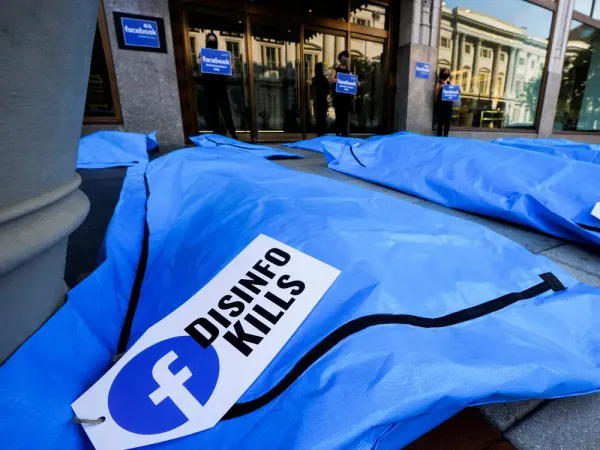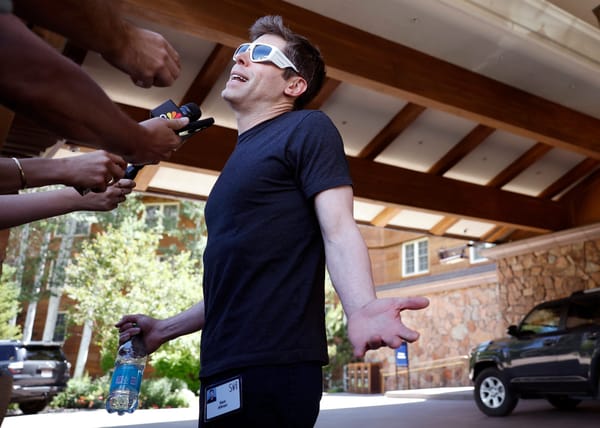The TikTok Election - How Reform got to be so popular
In this Public Inquiry feature, we analyse the TikTok content put out by UK political parties in the lead up to polls last week.
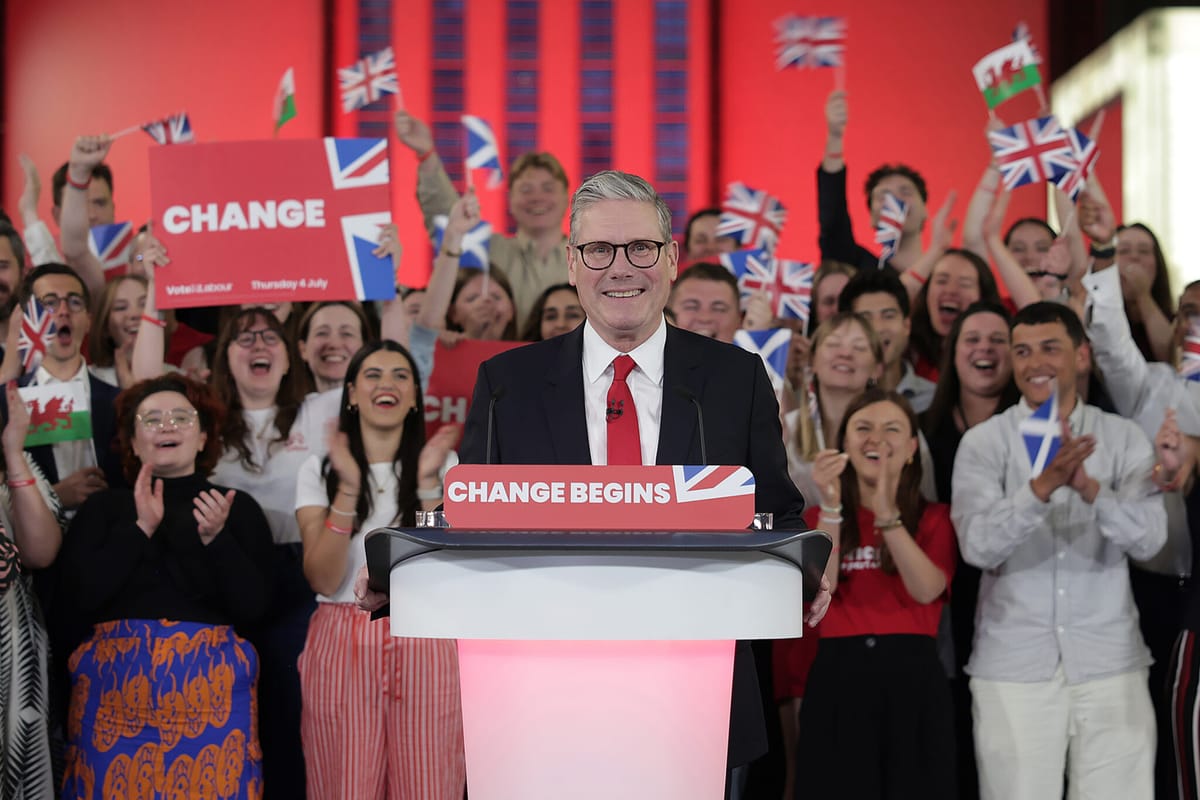
It’s finally a wrap-up on election season in the UK. It was short, but was it sweet? Depends on who you ask.
Labour won by a large majority and the Conservatives had their worst parliamentary performance ever. The Liberal Democrats (while ranking third in terms of seats shares) have been taken over by Reform UK ⸺ a rather fringe party ⸺ in terms of vote share.
Originally founded in November 2018 as the Brexit party, Reform has captured 14% of the vote share; a big jump from 2% last time around. The captain of the boat — an apt metaphor given the party has centred its messaging around boats and “boat people” — Nigel Farage enjoyed a disproportionate media spotlight, compared to other smaller parties, research by Loughborough University has shown. No doubt boosted by hosting his own show on GB news for the last three years.
But it’s not just traditional media that has helped. Both Reform’s and Farage’s brands are now rocketing on TikTok. Here are some of the key social media trends that played out during the election:
#1 Reform’s personality-driven TikTok takeover
The Citizens analysed the content that political parties put out on TikTok in the ten days leading up to election day. While Labour and the Conservatives did enter the TikTok race just in time, what did Reform UK do to make it to the top of charts? It capitalised on two things: Nigel Farage’s clout and people’s fears.
Labour predominantly flooded the platform with memes, largely scaring people about the possibility of another Tory government if they did not make an effort to vote Labour.
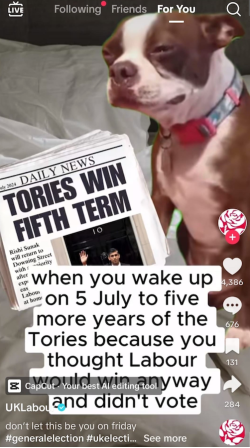
The Conservatives put out repetitive, piece-to-camera content showing Rishi Sunak declaring a Labour government would lead to a “tax trap”. Of the twelve TikToks released on the Conservatives’ page in that time frame, seven mentioned a Labour tax hike.
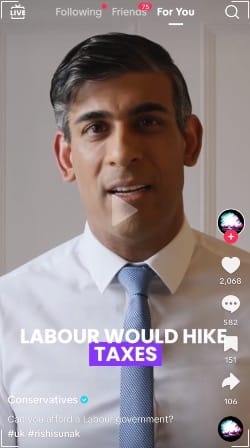
In contrast to this, Reform pursued a more personality-driven approach, making full use of Nigel Farage’s influence. Their TikTok videos were predominantly about their favourite topic, immigration. The content was created to drive an emotional response; something TikTok’s algorithm loves.
Peppered with fun hype videos showing Farage in a friendly light, mixing with supporters and chirpily campaigning, the far-right messaging was rather far-right lite, making it palatable to a wider audience. To any young person who stumbles upon Reform’s TikTok, they come off as a fun, anti-establishment party with a hard stance on border control. Viewers are left uninformed about what else Reform UK stands for - or indeed the racist and offensive comments made by their candidates during this election campaign.

#2 TikTok election, just for Reform UK? Not totally.
While most reporting on social media engagement during the UK election pointed to a Reform supremacy, in the last ten days before votes were cast, we found that Labour’s TikTok page actually fared better than Reform’s.
Our analysis* shows that in terms of plays on TikTok, Labour got an average of 235,000 plays on its posts, while Reform got around 168,000. Conservatives were close behind with an average of 165,000. Labour had a lead on likes and comments too, gathering an average of 17,000 likes and about 1000 comments on one post, in comparison to 10,000 likes and 600 comments on a Reform post.
But there is a caveat here. While other political candidates do not have their own personal TikTok pages, Reform’s Nigel Farage does. And engagement on Farage’s personal page was greater than those of all political parties put together. The average plays and likes on his posts were almost three times greater than that of Labour’s, with twice as many comments on average.
And therein lies the secret sauce of Reform’s success.
#3 It was a Labour lead on digital spend - to what effect?
Political parties poured more money than ever into social media, with the spend on polling day reaching a peak of a million pounds across parties.
Data from Who Targets Me reports that since 22nd May, when the election date was announced, until polling day on 4th July, Labour spent the most on digital ads — on Meta and Google — more than £3 million in total. Conservatives were second, spending half of that: £1.5 million. Reform UK spent the least at £640,000.
In terms of audience, Labour leads with the most number of followers on Facebook, Instagram, and TikTok. But while Labour has been on Facebook since 2008 and Instagram since 2012, Reform only joined in 2019, and has still managed to build a decent following.
Most notably, Reform seems to be achieving either similar or more engagement on its social media content than Labour and Conservatives; especially when you look at posts from individual politicians and not just party pages.
#4 Meta money didn’t manifest for Tories or Labour
While Farage worked on his TikTok celebrity, Sunak preferred Instagram. His personal Instagram has a whopping 3.5 million followers. As of the start of election week, it was sixteen times bigger than that of Starmer’s, and nine times more than that of Farage.
But it seems size isn’t the key thing here.
Reform UK, despite spending only one-third of what the Conservatives did on Meta platforms, surpassed them (and Labour) on engagement. Analysis by Sky News, conducted via Crowdtangle, showed that between late May and mid-June, Reform got 1.5 million social media page interactions, around three times more than Labour and the Conservatives.
All that being said, the picture is still hazy on how political parties would continue to use social media. For one, both the Labour Party and Conservatives only created a TikTok account this May after the election was announced and seem to have stopped posting since results day. That is not the case for the Reform party or Nigel Farage, who have used TikTok to build an audience for years now.
It was also quite visible that Reform got a leg-up because of the attention Farage could capture on a platform like TikTok ⸺ where his populist, polarising messaging was sweetened by the algorithm.
What are the implications of this, especially on young voters? We will have to wait and see.
We will back soon with more about the social media-verse, until then, whether you have been celebrating or mourning, we wish you a good election recovery!
* Our TikTok analysis is based on the impression counts that posts had as of 7th July 2024.

